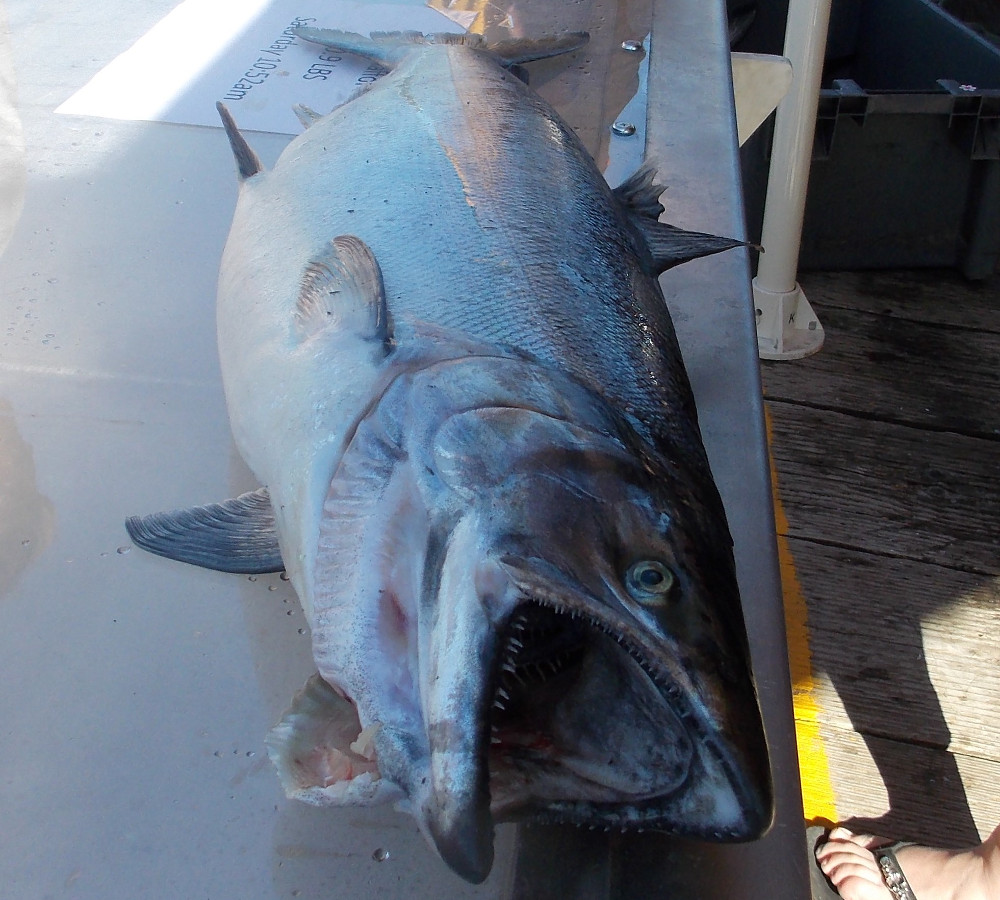
There are a few signs of a little improvement in king salmon numbers in Southeast Alaska. A fairly strong winter harvest means salmon fishermen can target more fish this summer.
First off, the catch for the winter commercial troll season ended up over 15,575 kings, when the season closed on March 15. That’s up around three thousand chinook from each of the last two years.
Grant Hagerman is regional troll management biologist for the Alaska Department of Fish and Game. He said the number of trollers out fishing was up from last year and nearly on par with the year before.
“It varied a little bit,” Hagerman said. “Of course in winter, the weather’s pretty foul and it can fluctuate quite a bit with how much these guys can get out and fish but this year the prices were very good. They started out the season around 12 dollars a pound. It didn’t change too much. It stayed around 12 dollars for most of the season and I believe we ended at about 12.50 or so. So very good. So regardless of whether weather was bad or fishing was slow that’s a high enough price to at least draw a few guys out.”
It was the third year that the winter season was shortened because of conservation concerns. In Southeast, winter troll catch rates in the early season near Sitka are used to determine the allowable catch for all gear groups in the summer fishing season. Those catch rates were better this winter and that will mean a total of 201,100 for all gear groups in the region. Hagerman said that’s up around 65,000 kings from last year.
“65,000 fish is a fair amount of fish,” he said. “For the trollers that translates into just over 47,000 fish. You know some of these year, translating that into days fished in the summer you could be looking at another two or three days, maybe even four of chinook retention, so that’s good news.”
Still, it’s not all good news. Despite the overall increase, commercial and sport fisheries in Southeast will continue to see restrictions to limit the harvest on wild stock kings returning to Alaska’s rivers. The region has three rivers that are listed as stocks of concern, the Chilkat River near Haines, King Salmon River south of Juneau and Unuk River near Ketchikan. Other king salmon runs don’t have that designation but also have been at historically low levels in recent years.
Hagerman said some king salmon returns have been meeting goals for escapement, or fish returning to spawn.
“Compared to 2018 just overall in general, the escapements for some of the other systems that we monitor, we do have 11 systems that we monitor, I believe four of the 11 had met goal in 2018 whereas seven of the 11 met goal in 2019,” Hagerman said. “So there were some improvements. But specifically for those stocks of concern, year two of those three did meet goal and for the Unuk I believe that was several consecutive years, 2018 and 2019 so that’s definitely been an improvement there.”
Biologists believe restrictions on seasons and area for commercial and sport fisheries are making a difference for returns to Southeast Alaska. Pre-season forecasts on the Stikine River near Wrangell and Taku River near Juneau are up a little from forecasts the year before.
Meanwhile, a Washington state environmental organization sued the National Marine Fisheries Service March 18, arguing that Alaska salmon fishermen are taking too many salmon bound for that region, and endangering a population of Puget Sound killer whales. It’s unclear if the Wild Fish Conservancy’s litigation could impact Alaska’s management of king salmon fisheries.
Commercial trolling for spring kings could start up in early May in some parts of Southeast. That season targets hatchery chinook. A summer season starts in July.











